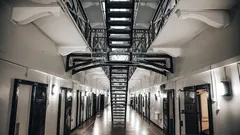1760
0
3 minutes
Suggested Articles

First-generation Ivy Leaguers triumph over unique college challenges
Discover key insights, life hacks, and data-driven tips for first-generation college students thriving in prestigious U.S. universities. Find practical strategies, unique challenges, and fresh perspectives essential for student success.

Families face hard choices as new rule narrows Head Start access for immigrant children
News & Updates

US Birthright Citizenship Debate: What Changes Could Mean for Millions
News & Updates

Educators warn Head Start exclusion leaves undocumented children behind
Civic Education

August 2025 Open Work Permit Changes Bring New Hope for Families in America
Resources & Tools

Community leaders ignite change and strengthen immigrant rights across America
Volunteer

Future citizens discover surprising truths as USCIS shapes new Americans
Civic Education

U.S. student visa decline forces Indian and Chinese students to rethink dreams
News & Updates

The American Dream: Origins, Meaning, and Its Evolving Promise
Civic Education

Indian students face rising US visa hurdles and turn to new destinations for brighter futures
News & Updates

New court order speeds special education help for families nationwide
Civic Education

First-generation Ivy Leaguers triumph over unique college challenges
Hiring

Americans brace for possible Social Security cuts that reshape retirement
News & Updates

Why this Florida data leak changes how we think about privacy
News & Updates

Build your own AI chatbot and unlock hands-on tech superpowers
Resources & Tools

How to outsmart hidden medical expenses in your golden years
Civic Education

California workers secure jobs this summer with new 2025 laws
Hiring
 Love Women Vibes
Love Women Vibes

Comments